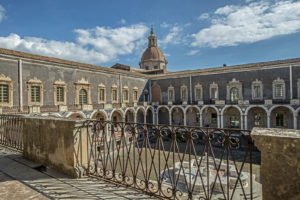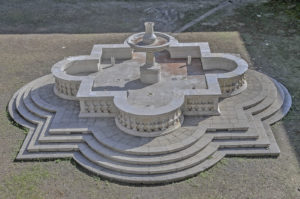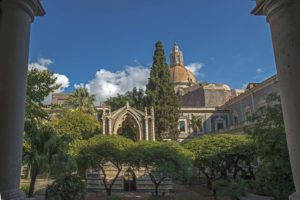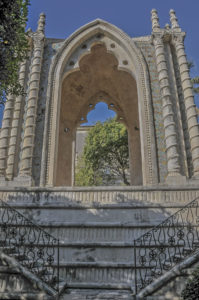Located on the hill of Montevergine is one of the city’s largest complexes and the second largest monastic complex in Europe.
Benedictine monastery of Catania has a very long history marked by the passage of time (one testimony includes the remains of a Roman domus, or house), civilisations and natural disasters which have made it one of the most resistant and richest cultural sites on the entire island.
Founded by the monks of Cassino in the 16th century, when the west cloister was constructed, with the large Carrara marble fountain completed in 1608, most of the rooms were used for monastery life: the kitchens, the basement cellars, the monks’ cells over two floors, the
refectory
and the parlour.
 During the eruption of 1669 the monastery was hit by magma that surrounded the building: it burst through the walls and reached the first-storey windows.
During the eruption of 1669 the monastery was hit by magma that surrounded the building: it burst through the walls and reached the first-storey windows.
Traces of the exceptional lava flow are still visible along the retaining walls, which were built specially to divert it. In 1693 the monastery was hit by the great earthquake and suffered serious damage.
The
new design
involved the construction of four large courtyards that would make it the largest in the world, but only two were completed: the cloister with the fountain and one in the east where the
caffeaos
(coffee house) was placed.



The structure was reminiscent of a gazebo, made with white stone featuring an interesting decoration in colourful
maiolica
with an abstract design.
